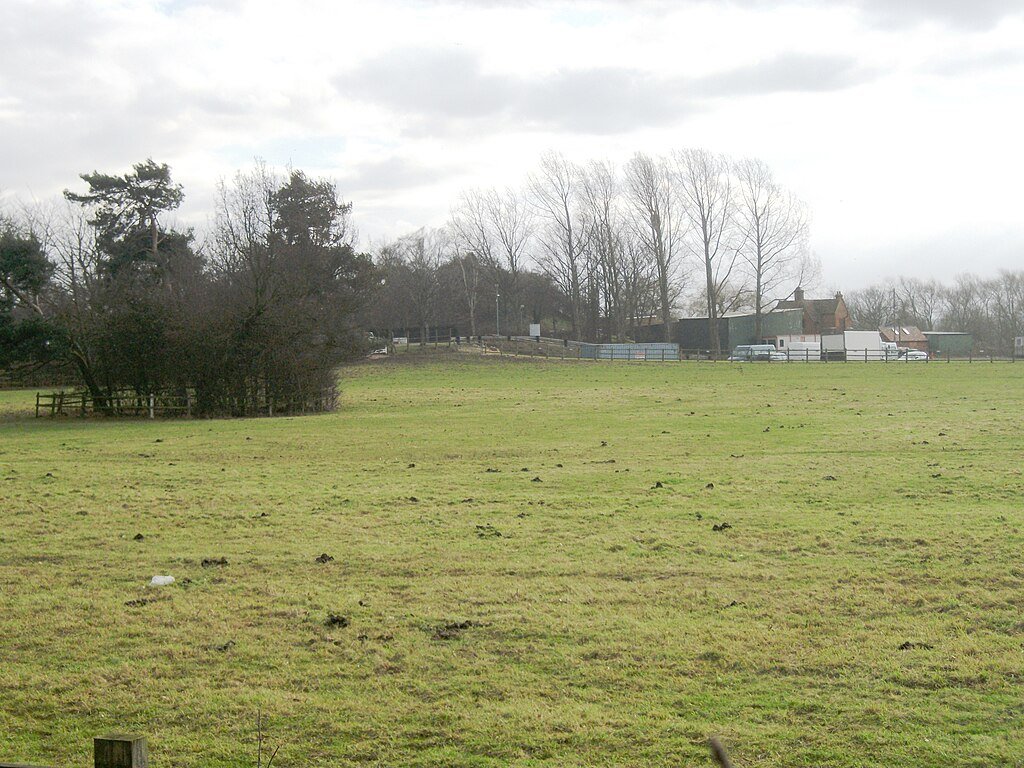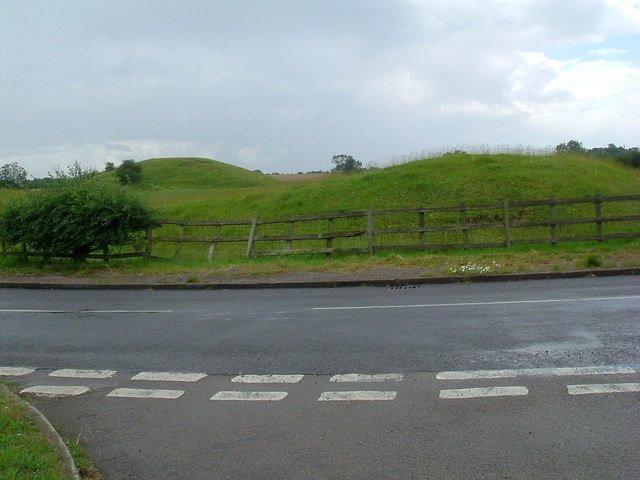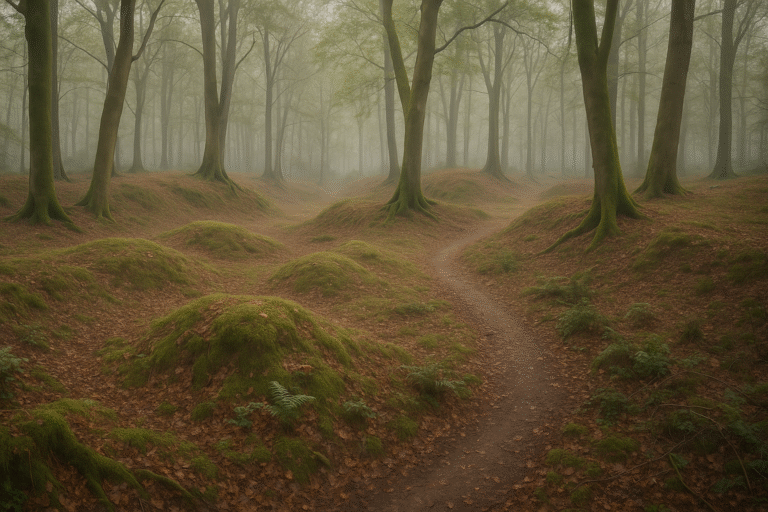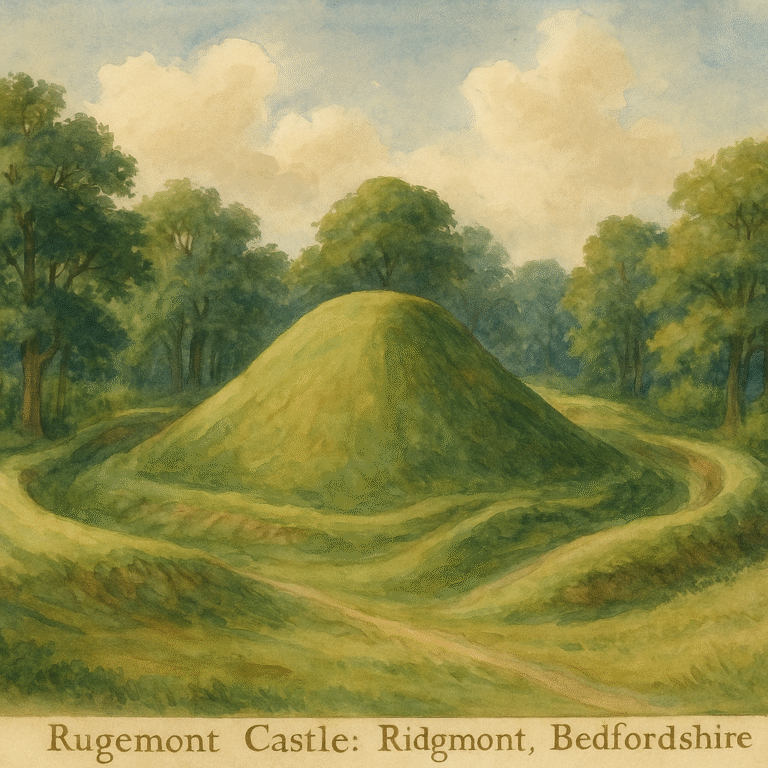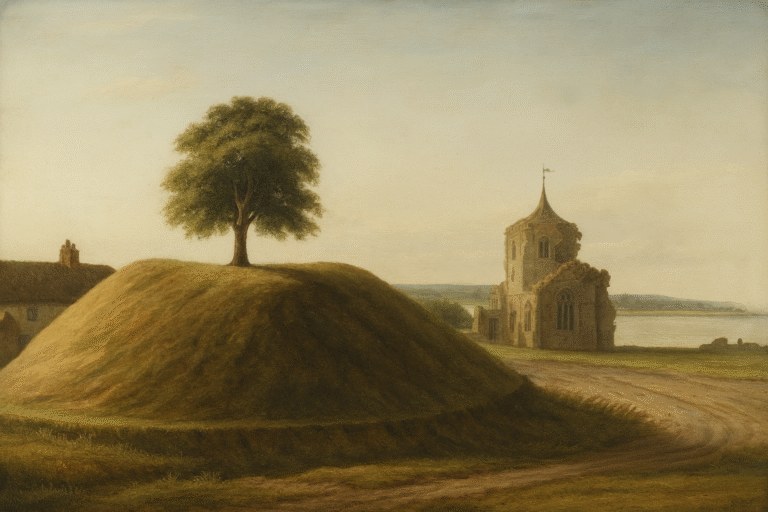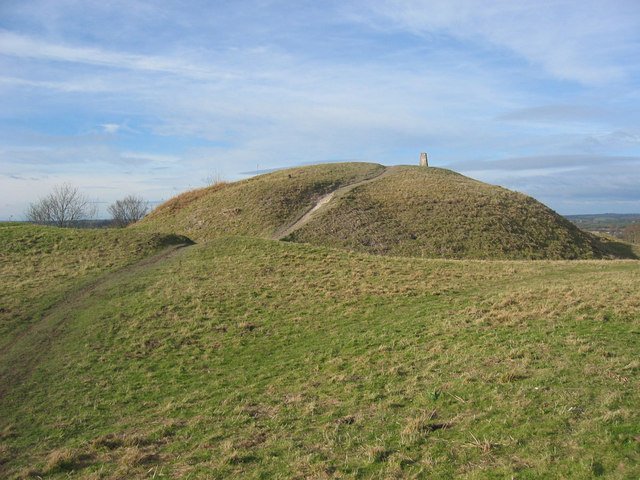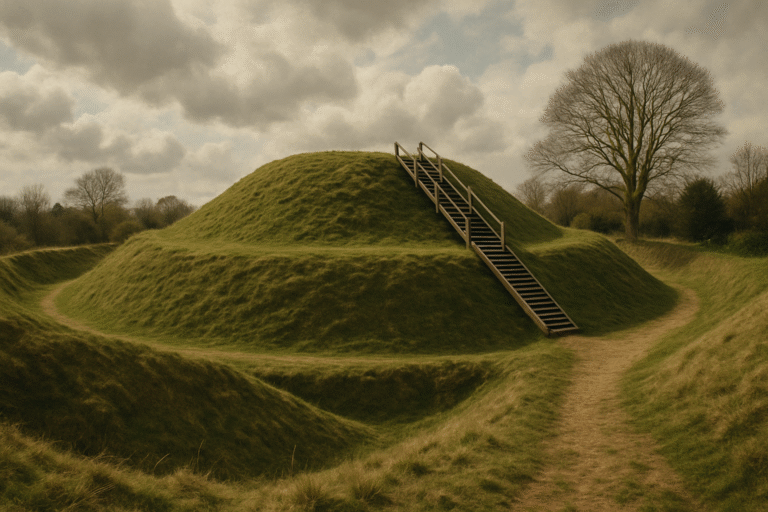Risinghoe Castle: Discovering Bedfordshire’s Forgotten Fortress
Risinghoe Castle: Hidden in the quiet suburb of Putnoe, just northeast of Bedford, lies one of England’s most intriguing yet underappreciated medieval sites – Risinghoe Castle. This little-known motte-and-bailey fortress, now a gentle rise in the landscape known as “Castle Mound,” is a window into England’s feudal past. Though not as grand as Edinburgh or Warwick, Risinghoe’s understated presence invites travellers to explore the lesser-told stories of Britain’s Norman heritage. Ideal for curious solo adventurers, families seeking outdoor history lessons, and couples chasing off-the-beaten-path charm, this guide reveals how a forgotten hillock in Bedfordshire connects to the broader tapestry of UK castle tourism.
The History Beneath the Hill: A Brief Past of Risinghoe Castle
Risinghoe Castle likely dates back to the 11th or early 12th century, constructed during the period of Norman consolidation following the conquest of 1066. Though there is no surviving stone keep or curtain wall, Risinghoe was once a classic motte-and-bailey design, a raised mound with a wooden or stone structure atop, surrounded by an enclosed courtyard (bailey) and protective ditch.
The site appears in historical records as a fortification possibly built by Hugh de Beauchamp, a powerful Norman baron and lord of Bedford. Its strategic location near the River Great Ouse would have made it a useful defensive outpost controlling access to Bedford and the surrounding lands.
Over time, as Bedford Castle rose in prominence just a few miles away, Risinghoe fell into disuse. By the 13th century, it had likely been abandoned, left to nature and local lore. Today, all that remains is the grass-covered motte, but its subtle form still whispers of a time when this part of Bedfordshire was a frontier of Norman control.
Exploring the Site Today: What to Expect
Visitors to Risinghoe Castle today won’t find towering walls or bustling exhibitions, but they will find a peaceful, evocative place perfect for quiet reflection, family exploration, or a brief historical detour. The castle mound is now integrated into a small green space, accessible via footpaths from the residential roads of Putnoe.
What You Can See:
- Castle Mound: The motte rises approximately 4.5 metres high and is around 20 metres in diameter. It’s a prominent grassy hill, especially noticeable in the otherwise flat Bedford landscape.
- Ditches and Earthworks: Slight traces of the surrounding ditch are visible on the south and west sides, best seen after light rain when contours catch the light.
- Interpretation Boards: Local councils have installed simple signage outlining the site’s history and significance.
Ideal For:
- Families: An engaging mini-history stop for children with room to run and climb.
- Couples: Combine with a walk through Putnoe Wood or Mowsbury Park for a peaceful outdoor date.
- Solo Travellers: A tranquil break from the buzz of Bedford town centre, with time to reflect or sketch.
Getting There and Practical Info
Location:
- Address: Putnoe, Bedford MK41, England
- Grid Reference: TL 068 531
By Car:
- From Bedford town centre, it’s a 10-minute drive via Kimbolton Road.
- Free parking available nearby at Mowsbury Park (Kimbolton Road, MK41 8AE).
By Public Transport:
- Bedford train station is well-connected (London to Bedford via Thameslink or East Midlands Railway).
- Local buses (e.g., Stagecoach 6 or 10) from Bedford town centre stop near Putnoe Lane or Wentworth Drive.
Accessibility:
- The site is open year-round with no entrance fee.
- The terrain is grassy and uneven; suitable footwear is recommended.
- Not wheelchair accessible due to natural gradients and lack of paved paths.
Opening Times:
- Open 24/7, as it’s a public green space with no gates or ticketing.
Photography:
- Permitted and encouraged. The best lighting is early morning or late afternoon.
- Ideal for landscape or documentary-style shots rather than architectural detail.
Suggested Itineraries Featuring Risinghoe Castle
1. Bedford Heritage Half-Day (Ideal for Families)
- Start at Bedford Park with a stroll and picnic (30 minutes).
- Mid-morning: Drive to Mowsbury Park and walk to Risinghoe Castle mound (1 hour).
- Lunch: Head to the Embankment Hotel’s riverside restaurant or Bedford town centre for family-friendly cafés.
2. Historic Bedfordshire Day Loop (For Solo Explorers or Couples)
- Morning: Visit Priory Country Park for birdwatching and waterside walks (1 hour).
- Late Morning: Head to Risinghoe Castle via Putnoe Wood trail (1 hour).
- Afternoon: Explore Bedford Castle mound and Higgins Art Gallery & Museum (2 hours).
- Evening: Dine at The Pantry, a cosy modern British bistro in Bedford.
Places to Eat Near Risinghoe Castle
- The Embankment: Upscale gastropub with views of the River Ouse, 10 minutes away.
- Number 13: Independent coffee shop and brunch spot in Bedford town centre.
- The Polhill Arms (Renhold): Traditional pub with a garden, a short drive east.
Accommodation Options Nearby
- d’Parys Hotel (Bedford): Boutique stay with a quirky interior, walking distance to Bedford Park.
- Premier Inn Bedford Town Centre: Budget-friendly and reliable.
- The Old Piggery Guest House (Wootton): Rural retreat just outside Bedford.
Seasonal Highlights and Events
Though Risinghoe Castle itself doesn’t host events, nearby Bedford offers a calendar of seasonal experiences:
- Spring: Bluebells in Putnoe Wood and Easter trails at Mowsbury Park.
- Summer: Bedford River Festival (biennial), one of the UK’s largest free outdoor events.
- Autumn: Foliage walks through Bedford Park and Putnoe Wood.
- Winter: Christmas lights and markets in Bedford town centre.
Beyond the Mound: Exploring UK Castle Heritage
Risinghoe Castle serves as a gateway into the broader world of Norman and medieval fortifications across the UK. While its remains are humble, they connect you to a grander network of fortresses, from the iconic to the obscure.
Similar Hidden Gems
- Odell Castle Mound (Bedfordshire): Another forgotten Norman site, in the quiet village of Odell.
- Sandy Castle Hill: Earthworks with views over the Ivel Valley.
- Totternhoe Castle (Dunstable): Chalk hill motte with dramatic scenery.
Tie-ins with Larger Castle Trails
- English Heritage Sites: Nearby Wrest Park and Houghton House combine gardens, ruins, and architecture.
- Norman Castles: Pair a visit with a day trip to Rockingham or Hertford castles.
The UK’s wealth of castle sites, more than 4,000 by some estimates, caters to all types of travellers. From restored royal residences like Windsor Castle to romantic ruins like Tintagel in Cornwall, they offer journeys into the past layered with landscape, legend, and local flavour.
Final Thoughts: Risinghoe’s Quiet Allure
Risinghoe Castle may lack the grandeur of Scotland’s stone giants or Wales’s moated masterpieces, but its value lies in the invitation it extends: to slow down, look closer, and appreciate the stories buried just beneath our feet. For UK travellers seeking a more contemplative encounter with history, or families wanting a low-key educational outing, Risinghoe is a worthy addition to any Bedfordshire itinerary. Let it be your starting point for exploring England’s medieval backbone, one motte at a time.
FAQs: Risinghoe Castle
What is Risinghoe Castle?
Risinghoe Castle is the site of a ruined medieval earthwork castle. It is a well-preserved example of a motte-and-bailey castle, with a large, man-made mound (the motte) that once supported a timber tower and a surrounding ditch that enclosed a bailey, or courtyard.
Where is it located?
The castle earthworks are located in the village of Goldington, a suburb of Bedford in Bedfordshire, England. The site is situated on a small hill and is a prominent feature in the local landscape.
What is its historical significance?
Risinghoe Castle is believed to have been built in the 12th century during the period of civil war in England known as The Anarchy. It was likely built by William de Beauchamp, a powerful local lord who was loyal to Empress Matilda. It served as a key stronghold during this turbulent time.
What can I expect to see when I visit?
You will see a large, grass-covered motte, which is the most prominent feature of the site. The surrounding ditch is still visible, giving a clear idea of the castle’s original layout. While the timber structures are gone, the earthworks themselves provide a tangible link to the site’s medieval past.
Is the site open to the public?
Yes, the site is a scheduled ancient monument and is accessible to the public. There is a footpath that leads to the castle mound, allowing visitors to explore the area and enjoy views of the surrounding countryside.
